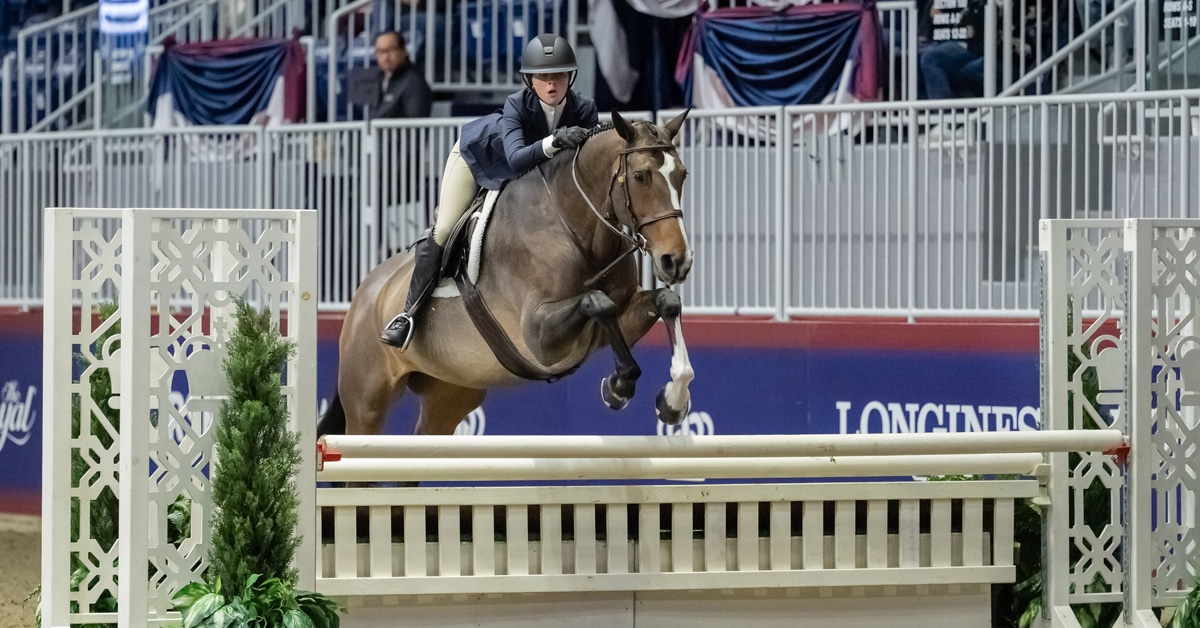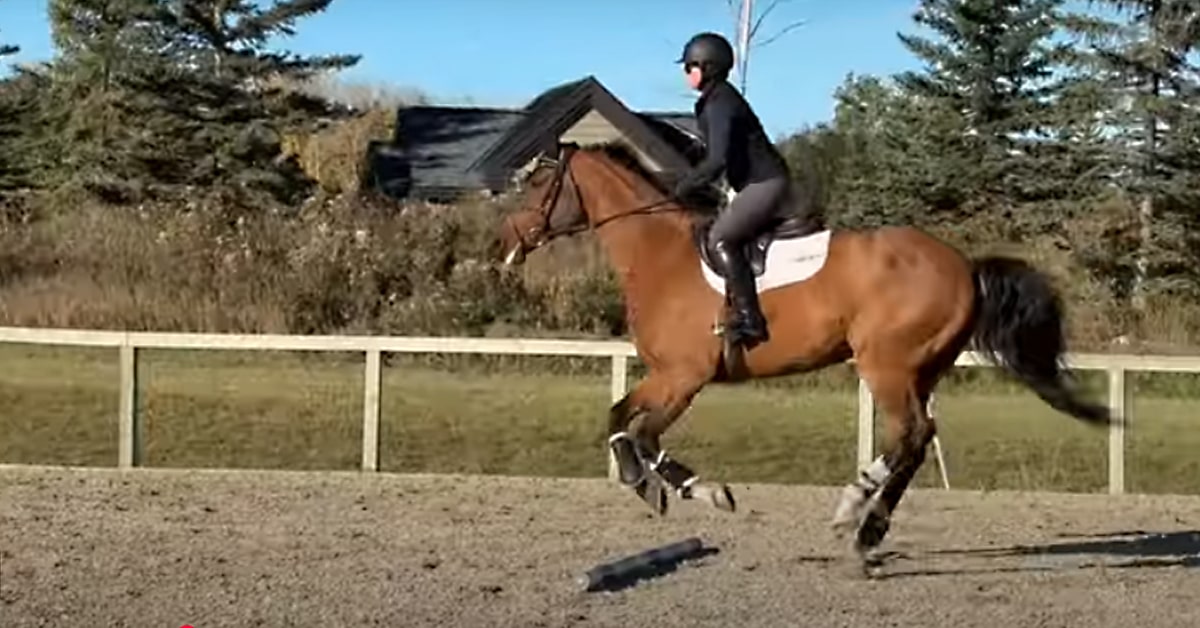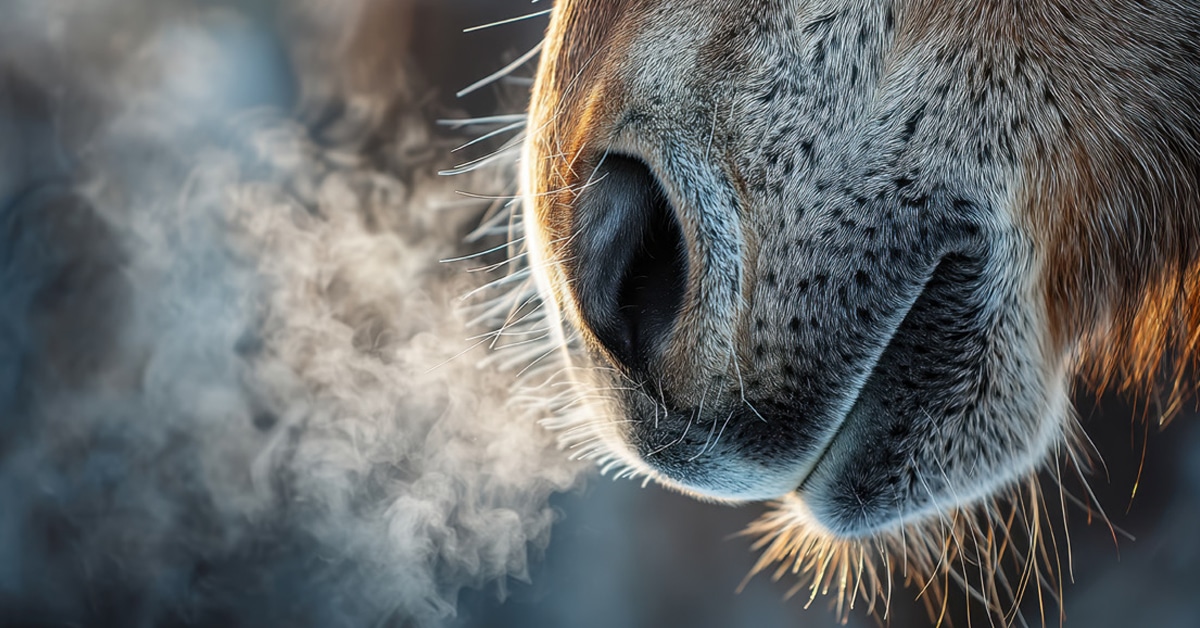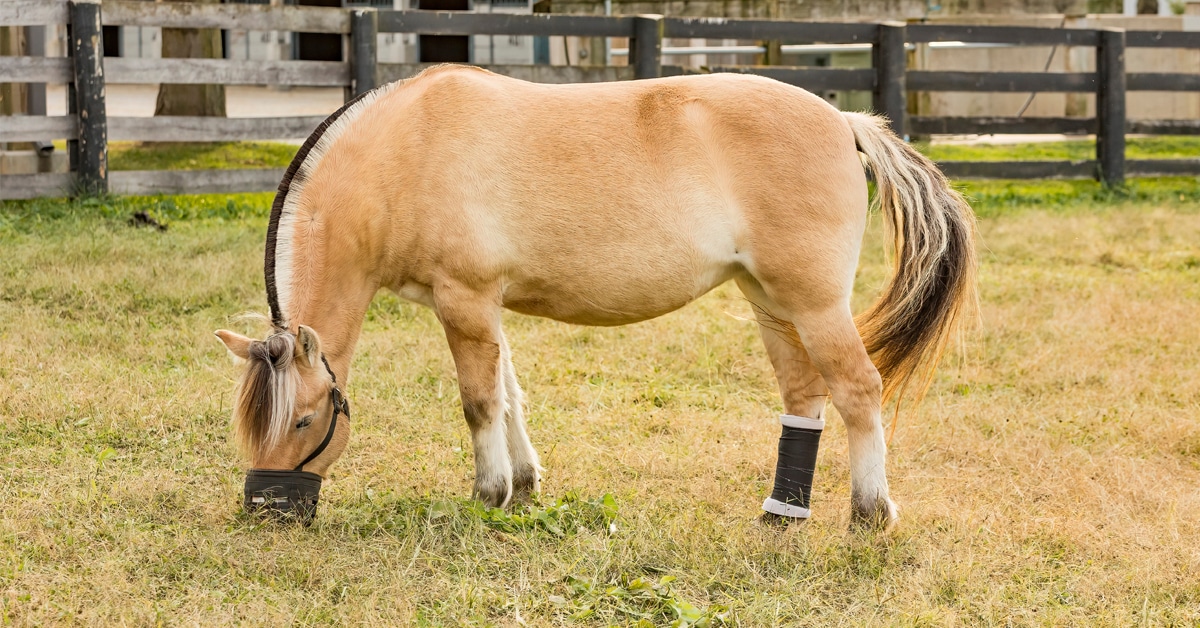A recent study out of Prince Edward Island has explored the relationship between the perceptions of horse owners and their horse’s weight – with some surprising results.
Megan Ross, corresponding author on the paper, first became interested in the topic years ago when she attended a webinar called ‘Fit or Fat.’ She owned two horses, including one which had been diagnosed with equine metabolic syndrome, and was shocked during the presentation when they showed what a healthy horse actually looked like. “They put up a picture of a horse that I thought was healthy, but they classified the horse as obese,” Ross said.
Later, as a PhD student at the Atlantic Veterinary College at the University of Prince Edward Island, she started working with a veterinarian at the AVC, Dr. Molly Mills, and conducted a study to better understand how owners perceived horse welfare within their management. That led her to the most recent study, as part of her PhD, aimed at better understanding the role that horse owners have to play in horse weight management specifically.
Published in 2024, the study found that owners held conflicting views: they saw their overweight horses as well-cared-for, but recognized that being overweight meant the horses had additional health risks, and they felt emotionally torn about compromising their horse’s mental well-being to address weight issues.
Weight management is a complex issue
In Canada, there are typically more overweight horses compared to underweight horses, Ross said. “Owners that want to do a good job are going to be more likely to keep their horse overweight for various reasons.”
The study was based on qualitative interviews conducted with 24 horse owners on Prince Edward Island, whose horses had been previously identified by a veterinarian as overweight or obese. Since social science research like this relies on people who are willing to participate, a certain type of person will take part, Ross noted. “Typically, the people that participate in research might be more proud of their management practices,” she said. “They may not be as embarrassed. They want to learn.”
While Ross notes that the owners placed a lot of importance on weight management, it turned out to be a complex issue.
First, it can be hard to even get an accurate measure of a horse’s weight. Horses don’t typically go on a scale. To estimate their weight, “we rely on these subjective measures, like the Henneke Body Condition [score],” Ross said. “That scale is really outdated. It was made in 1987 for broodmares, and we apply it across all breeds and disciplines now.” The body condition score may also be subject to error for horses with long hair coats, certain conformation differences, ponies, draft breeds, Thoroughbreds and senior horses.
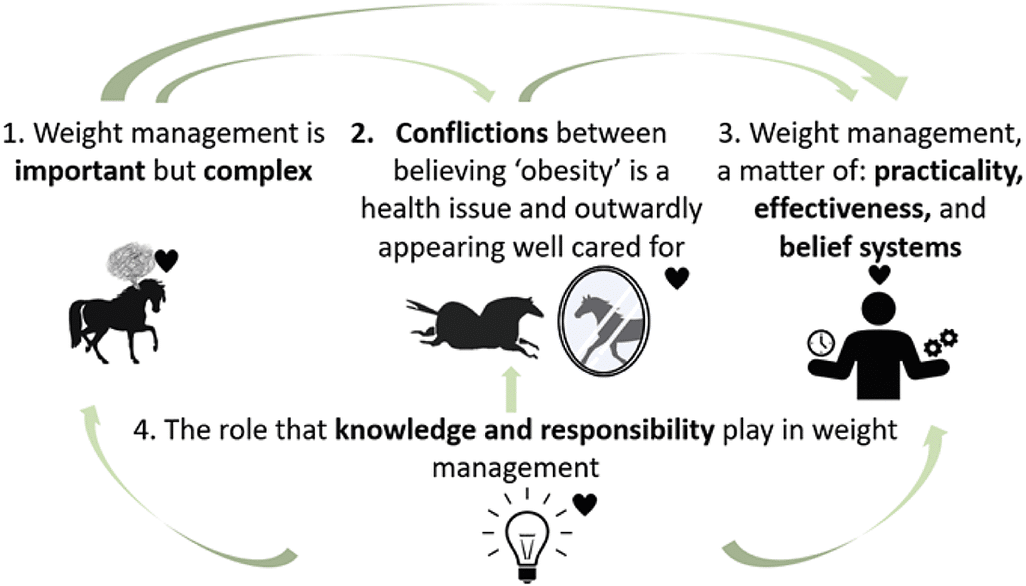
The relationships between the four themes representing the perspectives of the 24 participating horse owners.
Additionally, the study found that owners could recognize that an overweight horse was at “increased risk for negative health outcomes,” but at the same time viewed overweight horses as “well- cared-for.” Owners would use more positive language around horses who were slightly overweight, such as “pleasantly plump.” According to the study, owners also “preferred having overweight horses, as it was less emotionally taxing for them compared to horses with visible ribs.” Some owners felt distressed when their horses were thin, and the study quotes one participant as saying: “emotionally, I hate to see a horse walking by where you can count all his ribs… there’s no need for that.”
That reaction might be in part because there was a sense of judgment around horses that were underweight, or looked like they could be underweight. “There was this sort of social norm that just got people not being comfortable with that,” Ross said, “Whether it was judging other people, and/or being afraid of being judged by other people.
“I think people that keep their horses overweight do this because they want to be viewed as good horse caretakers,” she said.
Balancing emotional and physical well-being
Entrenched belief systems on horse-keeping could also conflict with implementing effective weight management strategies. For example, putting your horse on a track system could be an effective weight management strategy, but owners typically have a belief that horses need to be out in the field with a group of other horses.
“People feel like they have to choose between their horse’s emotional health by keeping them in these groups, with the access to a field and the ability to move freely and in a larger space, versus restricting their space, taking them away from the ability to graze, and potentially their friends,” Ross said. “Or if you did bring a friend in, that means that horsey friend is also facing these emotional challenges.”
As well, owners only have so much time and and so many resources. Building a track system, adding more small feedings throughout the day, or going out in the field to remove or attach a grazing muzzle may not be feasible solutions. “I think owners are always balancing all of these different aspects,” Ross said.
Finding ways to change
One of the owners in the study talked about how they felt that knowledge in the horse industry was really rooted in tradition, Ross said. It prompts some questions: “What images are we putting out into the world? Are we promoting this unhealthy body weight? Are we promoting or perpetuating this idea that overweight horses are healthy?”
In the show ring, especially in dressage and breed disciplines, “usually overweight horses would be more likely to score better than underweight horses,” Ross pointed out. A 2022 study based on research at the USEF Pony Finals competition found that judges favoured fatness in show ponies.
“This can obviously be really problematic – people go to shows to learn and judges are reinforcing this sort of macro interpretation of what a healthy horse looks like,” she said.
Overall, Ross’s study highlights the need for both greater education for owners and a society that recognizes and accepts horses within a healthy weight range. She hopes that the study will help guide the research industry and veterinary community in how they communicate with owners about their horse’s welfare. That includes communicating with them “in a really thoughtful and nuanced way… and trying to better understand their perspective.”
The Latest



